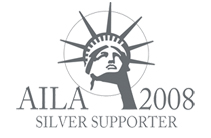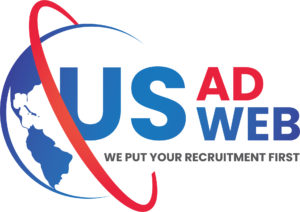USADWEB NEWSBLAST Vol. III, Issue 1
 In This Issue
In This Issue
1. More States Require Employers to Use E-Verify
2. Placing New York Job Orders for Companies Using Professional Employer Organizations (PEOs)
3. Supervised Recruitment FAQs
1. More States Require Employers to Use E-Verify
E-Verify is a free Internet-based system that can be used by employers to electronically verify the employment eligibility of new hires. The program, formerly known as the Basic Pilot Program, is operated through the Department of Homeland Security (DHS) in connection with the Social Security Administration (SSA). Although the federal government has not made participation in the program mandatory (with the exception of federal employers and contractors), several states have passed their own laws mandating that employers use E-Verify.
Arizona, Mississippi, Rhode Island, and South Carolina require that all employers use E-Verify to check the legal status of workers. The following states require only public or state employers and private employers with state contracts to participate:
Colorado
Georgia
Minnesota
Missouri
North Carolina
Oklahoma
Utah
The Mississippi State Workforce Agency (SWA) is also required to e-verify applicants before they can be referred to employers. Therefore, MS is now suppressing contact information in job order postings and directing applicants instead to apply in person at a One-Stop office so that they can first be e-verified.
The program has come under scrutiny from anti-discrimination and immigration rights advocates due to inaccurate results that unfairly deprive some legal workers of their jobs. Due to errors in the Social Security database, E-Verify’s current accuracy rate is approximately 94%. Furthermore, opponents claim that employers will use the system as a pretext for discriminating against workers.
Almost half of employers currently using E-Verify do not abide by all of the provisions designed to protect citizens and legal immigrants. For instance, an employer is not allowed to take any adverse action against an employee unless an E-Verify investigation results in a “final non-confirmation.” However, some employers have fired workers who received an initial “tentative non-confirmation” even if that result was later proven inaccurate, such as in the case of Fernando Tinoco of Chicago, IL.
In an interesting departure from the trend to mandate the use of E-Verify, and partly as a result of the Tinoco case, Illinois has passed a law forbidding employers from using the system until the DHS and SSA show that they can resolve 99% of tentative non-confirmation notices within 3 days. The law also provides that local government cannot require employers to use the program as a condition of receiving a government contract or business license, or as a punishment for violating certain immigration or licensing laws. The DHS subsequently sued IL, arguing that the law interferes with their efforts to reduce illegal immigration. The case is still pending.
2. Placing New York Job Orders for Companies Using Professional Employer Organizations (PEOs)
Sometimes companies use a Professional Employer Organization (PEO) for their staffing and payroll needs. In such cases, the New York Department of Labor (DOL) has specific guidelines for placing job orders.
When a company uses a PEO, the PEO pays the unemployment insurance tax on the company’s behalf. Therefore, the PEO, not the company, is considered the “reported employer” for the NY DOL’s tax reporting purposes.
Therefore, the job order must be filed under the name of the PEO, and not the “true employer.” In order to submit the NY job order on your behalf, we will need the Unemployment Insurance Number (UIN) and complete contact information, including a contact person, for the PEO. Additionally, we will need to provide the true employer’s type of business and number of employees.
The true employer’s contact information will be listed in the actual text of the job order and their address will be given as the job location.
Using the above guidelines will help to ensure the timeliness and accuracy of your NY job order placements.
3. Supervised Recruitment FAQs
The DOL formally released FAQs this month on the topic of Supervised Recruitment. We have highlighted a few of the most important items below.
Notice: Reasons & Timeframes
The Certifying Officer (CO) may determine that supervised recruitment is necessary if the employer “substantially failed” to give the required documentation, or provided “inadequate” or “materially misrepresented” information.
The employer first receives a Notification of Supervised Recruitment letter. The employer must then provide a draft of the advertisement to the CO within 30 days from the date of the notification letter. The drafted ad is subject to the CO’s review, and the CO may identify changes that need to be made. The recruitment may not begin until the employer receives a Recruitment Instructions letter from the CO.
As specified in the Recruitment Instructions letter, the advertisement will direct applicants to reply to a PO Box address. The CO will send all applications and resumes to the employer, their agent, or their attorney for consideration.
The employer is required to submit a recruitment report within 30 days of receiving a written request from the CO. A one-time extension on the report may be granted for good cause at the CO’s discretion.
Processing time for a supervised recruitment application should take about 180 days, assuming that no extensions are made and no additional documentation is required by the CO.
Compliance:
Failure to respond in a timely manner or to request an extension of time will result in a denial of the application. A pattern of compliance failures may result in debarment from the PERM program for up to 3 years.
The employer must notify the Office of Foreign Labor Certification (OFLC) of any change in representation once the decision to hire an agent or attorney is finalized. The notice must be included in communication, and a hard copy of the signed original must be mailed to the OFLC.
The OFLC will not communicate with any attorney or agent of the employer unless notice establishing the representation as been provided and they are listed on the ETA Form 9089 submitted for the case.
About USADWEB
USADWEB, LLC. is an innovative advertising agency that understands the immigration needs of companies placing recruitment advertising for labor certification cases in PERM processes. For more than half a decade, we have helped law offices and companies all over the United States meet the Department of Labor’s recruiting requirements. Take advantage of our expertise and relationships with publications throughout the country. Our knowledgeable staff has experience placing all forms of recruitment: newspapers, periodicals, journals, internet job search postings, campus recruitment, radio ads, and more. Contact a representative for more information on placing your ads today!
As always, USADWEB welcomes your feedback.
If you have suggestions for content, please click here.
If you have suggestions on how we can better serve you, please click here.
Finally, if you have any questions or comments regarding anything you read in a NewsBlast, or if you have additional information that you would like to share, please feel free to contact us.
